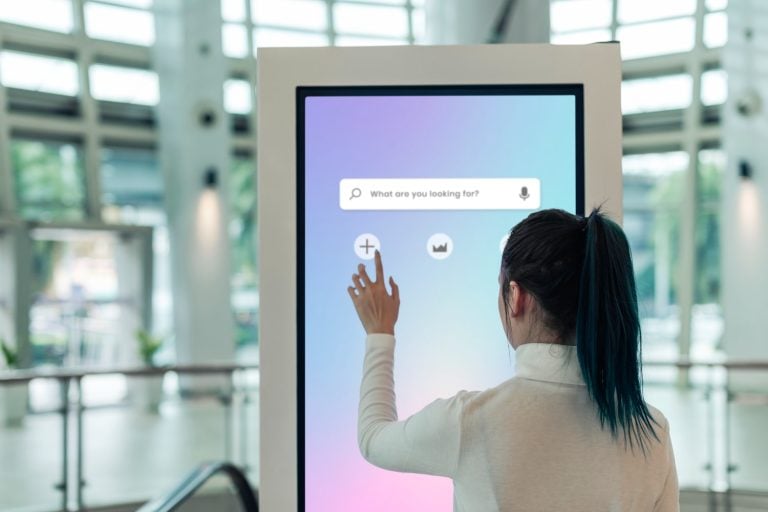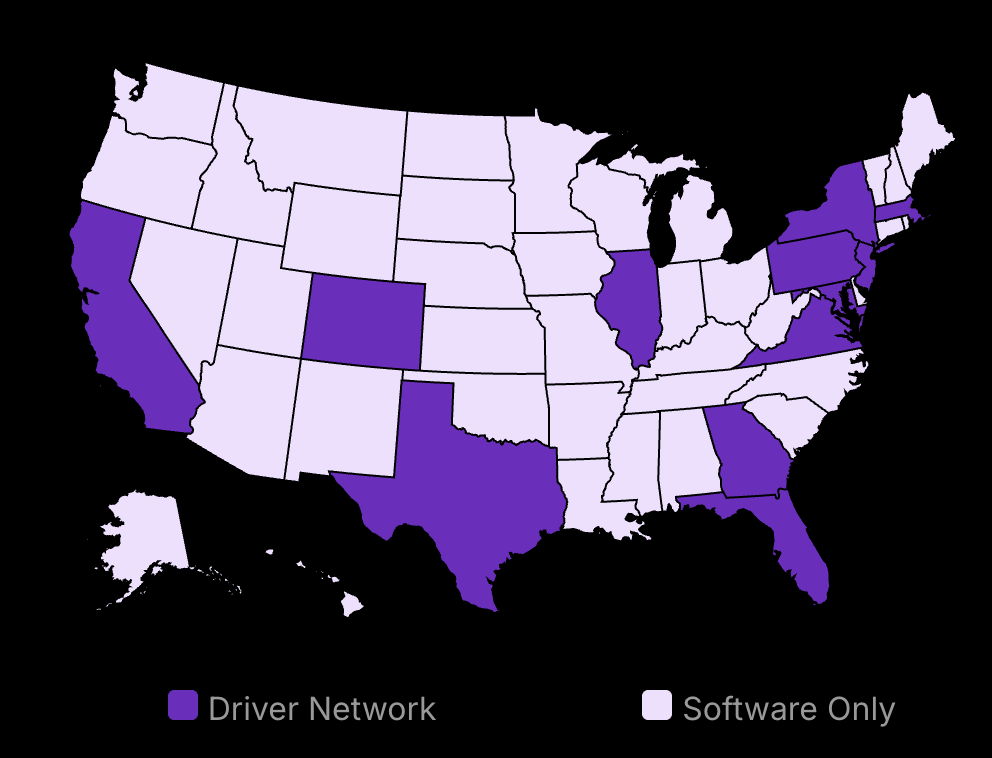Walk through any shopping mall, airport, or restaurant today. Notice something? In fact, digital signage displays and digital screens are everywhere, showcasing interactive content. – and they’re not just decorative. These dynamic displays are quietly reshaping how businesses communicate with customers.
Digital signage is no longer a luxury for big corporations. It’s becoming essential technology for businesses of all sizes, incorporating essential features to attract customers. Why? Because it works.
Consider this: Studies show that digital signage displays capture 400% more views than static signage. And those aren’t just casual glances – people retain 83% of what they see on dynamic digital content and multimedia content compared to traditional advertising methods.
But there’s something more interesting happening here. Digital signage is creating what psychologists call “dwell time” – those precious moments when a customer pauses, looks, and engages. This subtle pause can translate directly to sales.
A medium-sized restaurant chain in Chicago replaced its menu boards with digital displays in 2024. The result? A 28% increase in high-margin item sales within the first month. The content was identical – only the delivery method changed.
What makes digital signage so powerful isn’t just the technology. It’s the psychology behind it, augmented by effective digital signage software. Our brains are hardwired to notice movement and change. Static signs become invisible after repeated exposure, while digital content can enhance engagement. Digital content stays fresh, demanding attention.
For business owners, this creates an opportunity that didn’t exist before: the ability to manage content dynamically, including real time content updates.
What is digital signage, and is it right for your business? The evidence suggests it might be the most cost-effective communication tool you’re not yet using.

Metrobi drivers are rated 4.97 out of 5
Trusted by local businesses for:
- Background-checked professionals
- Specialized in business deliveries
- Same drivers for consistency
- 4.97/5 average delivery rating
What is Digital Signage in Business?
Digital signage combines hardware and software to display dynamic content in business environments.
Research shows 80% of businesses report increased customer satisfaction after implementing digital signage.
When properly deployed, digital displays can deliver up to 400% more views than static signs.
Definition and Effectiveness of Digital Signage Software
Digital signage in business refers to the use of digital display technologies to present visual content for information, advertising, and engagement purposes. Unlike traditional static signs, digital signage systems consist of screens (typically LCD, LED, or projection-based), media players, and content management software that allows for dynamic, updatable messaging. These digital signage systems appear in retail stores, corporate offices, healthcare facilities, educational institutions, and various public spaces.
The technology has proven remarkably effective across business environments. According to a 2025 Nielsen study, digital displays capture 400% more views than static displays, with an average attention retention rate of 65% compared to 40% for traditional signage, which digital signage eliminates. This increased attention directly translates to business results through effective contextual information. through effective digital signage solutions. Research from Intel shows that digital signage can increase the average purchase amount by 29.5% and create a 46% increase in customer satisfaction.
What separates effective digital signage from underperforming implementations is context and content relevance tailored to the target audience. Retail giant Target deployed digital signage in its store locations with location-specific information and saw foot traffic increase by 23% in departments where screens were installed. Similarly, McDonald’s rollout of digital menu boards resulted in a 15% increase in optional add-ons at checkout. These real-world examples demonstrate that when content is timely, relevant, and strategically placed, digital signage delivers measurable results.
Key Components of Business Digital Signage
Hardware Elements of Digital Signage Systems
The physical components of digital signage systems form the foundation of any installation. The most visible element is the display screen itself, which can range from small 7-inch tablet-sized displays to massive outdoor LED walls spanning hundreds of square feet. Display technologies vary based on application, with indoor environments typically using LCD or OLED panels for their color accuracy and lower cost, while outdoor installations rely on high-brightness LED panels that remain visible in direct sunlight.
Media players serve as the computing backbone of digital signage systems, storing content and sending display signals to screens. These range from simple USB sticks with basic playback capabilities to sophisticated computers running advanced content management systems. Enterprise-grade installations often implement System-on-Chip (SoC) displays where the media player is integrated directly into the screen itself, reducing hardware requirements and points of failure.
The mounting systems and installation infrastructure, though less glamorous, are equally important components. Proper ventilation, secure mounting, power management, and network connectivity determine whether a digital signage system operates reliably. A 2024 Digital Signage Federation report found that 73% of system failures related to hardware issues stemmed from improper installation practices rather than equipment malfunction, highlighting the importance of professional installation.
Software and Digital Signage Content Management
The software that powers digital signage systems has evolved significantly since the early days of the technology. Modern Content Management Systems (CMS) allow non-technical staff to schedule, update, and manage digital signage content across multiple locations from a central dashboard. These platforms handle everything from simple playlist management to complex rules-based content scheduling that can change displays based on time of day, weather, inventory levels, or audience analytics.
Cloud-based CMS platforms have become the standard, offering advantages in scalability, remote management, and integration capabilities. According to a 2025 Digital Signage Today industry report, 87% of new digital signage deployments use cloud-based management systems rather than on-premise solutions. This shift reflects both the maturity of cloud technologies and the business need for flexible, accessible management tools.
Content creation tools have similarly evolved to meet the demands of digital signage networks. While traditional design software like Adobe Creative Suite remains important for creating base assets, purpose-built digital signage content creation tools now offer templates, real-time data integration, and format optimization specifically for digital displays. These specialized tools help businesses overcome what has historically been one of the biggest challenges in digital signage: maintaining a steady stream of fresh, relevant content.
Implementation Strategies for Maximum Impact
Successful digital signage implementation begins with clear objectives. Businesses that define specific goals—whether increasing sales of certain products, reducing perceived wait times, improving internal communications, or enhancing brand perception—consistently see better returns on their digital signage investments. A 2024 study by the Digital Signage Association found that companies with documented objectives for their signage networks achieved 34% higher ROI than those implementing the technology without clear goals.
Placement strategy proves equally critical to effectiveness. High-traffic areas naturally generate more views, but strategic positioning can significantly amplify impact. Screens placed at decision points (near product selections or at checkout) show conversion rates up to 3x higher than displays in general areas. Similarly, digital signs positioned at eye level receive 35% more attention than those mounted too high or too low, according to eye-tracking studies conducted by SignageLive in 2023.
Content rotation and freshness directly correlate with continued engagement. The “wear-out factor”—where viewers begin to ignore content they’ve seen repeatedly—typically begins after 7-10 exposures to the same content. Businesses that refresh their content weekly report 28% higher viewer retention than those updating monthly or less frequently. This is particularly important in environments where the same people regularly see the displays, such as the workplace or educational settings.
Statistical Evidence of Digital Signage Effectiveness
The effectiveness of digital signage is well-documented across various metrics. Perhaps most compelling is its direct impact on purchasing behavior. A comprehensive study by POPAI (Point of Purchase Advertising International) found that digital signage increases the average purchase amount by 29.5% and generates a 31.8% increase in overall sales volume when used in retail environments. These numbers represent significant improvements over static signage, which typically drives increases in the 2-8% range.
Digital signage also creates measurable improvements in information retention. In corporate and educational settings, information presented on digital signs is remembered at a rate 83% higher than the same information distributed through email, according to research from Arbitron. This makes digital signage particularly valuable for information dissemination and personalized messaging, safety announcements, corporate communications, and other critical messages that need to reach broad audiences effectively.
From a cost perspective, digital signage offers clear advantages over traditional print materials. The initial investment in digital signage hardware typically breaks even after 9-18 months compared to the ongoing costs of printing, shipping, and installing traditional signage. A 2025 analysis by Grandview Research found that businesses switching from print to digital signage reduced their five-year signage costs by an average of 48%, even accounting for electricity and maintenance costs.
Importantly, digital signage effectiveness varies significantly by industry and application. Retail and food service businesses typically see the highest direct ROI, with average returns of $3.50 for every dollar spent on digital signage, enhancing brand recognition. Healthcare settings show more modest financial returns but report significant improvements in patient satisfaction and perceived wait times, with a 35% reduction in perceived waiting time when digital signage is present in waiting areas.
Common Challenges and Limitations of Digital Signage Displays and Contents
While digital signage offers substantial benefits, it comes with challenges that businesses should consider before implementation. The most commonly reported challenge is to create digital signage display or content and manage it effectively. A 2024 survey by Sixteen: Nine found that 62% of businesses struggle to maintain fresh content on their digital signage networks, leading to stale displays that viewers eventually tune out. Successful implementations typically include budgeting for ongoing content creation or subscription services that provide regularly updated content.
Technical issues present another significant challenge. Network connectivity problems, software glitches, and hardware failures can result in blank screens or outdated information. According to Digital Signage Today’s annual survey, 47% of businesses reported at least one significant display outage per quarter. Robust monitoring systems and maintenance contracts help mitigate these risks, but add to the total cost of ownership.
Privacy concerns also limit certain applications of digital signage, particularly those involving audience measurement and personalization. Camera-based audience analytics systems that can determine viewer demographics have faced backlash and regulatory limitations in some regions, particularly concerning user input. In the European Union, GDPR requirements have forced many businesses to scale back ambitious personalization plans or implement explicit consent mechanisms before collecting viewer data.
Perhaps the most significant limitation is simply poor implementation. Digital signage deployed without clear objectives, placed in low-visibility locations, or loaded with irrelevant content fails to deliver on its potential. The difference between successful and unsuccessful deployments often comes down to planning and execution rather than the technology itself. Businesses that treat digital signage as a strategic communication channel rather than a tech novelty consistently report better outcomes.
Main Benefits of Digital Signage for Companies
Digital signage increases customer engagement by 400% compared to static displays.
Companies save money long-term through the elimination of printing costs and instant content updates.
Strategic implementation drives sales by influencing customer decisions at critical moments
Enhanced Customer Engagement With Digital Signs
Digital signage creates meaningful connections with audiences that traditional static displays cannot match. Recent data shows businesses using dynamic digital signage receive up to four times more views than those using static content. This dramatic increase in attention directly translates to higher engagement rates across all business sectors.
The impact on customer behavior is clear – 80% of customers choose to enter stores after seeing digital signage content. This powerful statistic shows how effectively digital displays capture attention and influence immediate consumer decisions, especially when incorporating qr codes. When customers encounter dynamic, relevant content at the right moment, they respond with action.
In financial services specifically, the transformation has been significant. About 60% of banking institutions now use digital signage to provide engaging content to customers waiting for service. Of this content, 75% relates to bank updates, while 25% offers other valuable information. This strategy turns potentially frustrating wait times into opportunities for meaningful engagement and education.
Cost-Effectiveness and Flexibility
While digital signage requires a higher initial investment than traditional signage, the long-term financial benefits are substantial. Companies eliminate recurring printing costs for updated promotional materials, product information, and directional signage. A mid-sized retail chain typically spends $15,000-$20,000 annually on printed sign updates across multiple locations – costs that disappear with digital implementation.
Content management systems for digital signage enable instant updates across all locations simultaneously. This capability proves particularly valuable during price changes, promotions, or emergency communications. What previously required days of coordination with printing companies and physical distribution now happens within minutes from a central dashboard.
The operational flexibility extends beyond just cost savings. Digital signage allows businesses to:
Schedule different content based on time of day or customer traffic patterns
Update messaging in real-time to respond to market changes
A/B test different content approaches to optimize effectiveness
Display dynamic content that incorporates social media feeds, weather updates, or news
This adaptability enables businesses to remain relevant and responsive without the delays associated with traditional signage updates. During the holiday shopping season, retailers can adjust promotions hourly based on inventory levels, especially for interactive displays. Restaurants can switch menus between breakfast and lunch without staff intervention. Healthcare facilities can update wait times and provider information as conditions change throughout the day.
Boosted Sales and Brand Awareness with Digital Signage Solutions
The direct impact of digital signage on sales performance has been well-documented in multiple industries. Digital media in public venues consistently reaches more consumers than either internet advertising or traditional print methods. This expanded reach creates unprecedented opportunities for brand exposure at critical decision points.
The global digital signage market growth reflects the proven ROI businesses experience, with projections reaching $27.3 billion by 2029. This expansion stems from measurable increases in sales across retail, hospitality, and service industries after digital signage implementation. Quick-service restaurants report average order value increases of 5-8% when using menu boards with animated food imagery and promotional content.
Digital displays effectively shorten decision windows by presenting relevant information exactly when customers need it. A customer standing in a retail aisle who sees dynamic product comparison information makes purchasing decisions faster and with greater confidence. This targeted information delivery at key decision points creates measurable conversion improvements across industries.
Improved Internal Communications
Beyond customer-facing benefits, digital signage transforms internal company communications. Traditional employee communication methods like emails and printed bulletins often go unnoticed, while outdoor signage makes a significant impact. Digital displays in break rooms, hallways, and common areas deliver important visual information. where employees naturally gather.
Manufacturing facilities use digital signage to display real-time production metrics, safety information, and quality control standards. This visual reinforcement of key data keeps teams aligned on priorities and performance expectations. Companies implementing these systems report improved compliance with safety protocols and increased awareness of production goals.
Corporate offices leverage digital displays for meeting room scheduling, company announcements, and recognition of employee achievements. This visibility fosters a stronger organizational culture and keeps remote workers connected when visiting office locations. Human resources departments report higher participation rates in company programs and events when promoted through digital signage compared to email announcements alone.
Environmental Impact and Sustainability
The environmental benefits of digital signage create additional value for companies with sustainability commitments. Eliminating printed materials and transitioning to electronic signage reduces paper consumption, printing chemicals, and transportation emissions associated with physical sign distribution compared to other systems. A medium-sized retail chain can save thousands of pounds of paper waste annually by transitioning to digital displays.
Modern digital signage systems also incorporate energy-efficient technologies that minimize power consumption. The right hardware, such as LED displays, consumes significantly less electricity than older technologies., and smart systems power down during off-hours to further reduce energy usage. These efficiencies align with corporate environmental goals while simultaneously reducing operational costs.
Companies can promote their sustainability efforts through the very medium that supports them. In corporate buildings, digital displays can showcase promotional offers and environmental initiatives, track progress toward sustainability goals, and educate customers about eco-friendly products or practices. This communication strategy reinforces brand values while demonstrating concrete actions toward environmental responsibility.
Data Collection and Customer Insights
Digital signage systems equipped with analytics capabilities provide valuable data on customer behavior and engagement. Integrated sensors can track viewer attention time, demographic information, and interaction patterns, enabling users to maintain privacy through anonymized data collection.
Retail environments use these insights to optimize product placement, promotional messaging, and traffic flow through stores. Understanding which displays capture the most attention and for how long helps businesses refine content strategies for maximum impact. This continuous improvement process creates increasingly effective, interactive experiences for customers. based on actual behavior rather than assumptions.
What is Digital Signage for a Content Management System
As we’ve seen, what is digital signage software is more than screens on walls—it’s a powerful business tool that connects with customers and drives results. The shift from static to digital displays offers businesses real advantages: better engagement, cost savings, and higher sales.
The technology continues to evolve, with new display types and content strategies making implementation easier than ever. Whether in retail, healthcare, education, or hospitality, digital signage provides a direct line to your audience with messages that can be updated instantly.
To succeed with digital signage, remember these key points:
Choose the right display technology for your environment
Develop content that speaks directly to your audience
Track performance metrics to continuously improve
Stay current with emerging trends as the technology advances


























